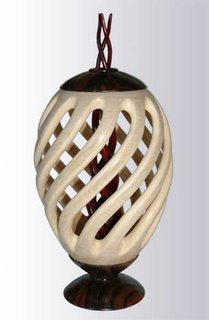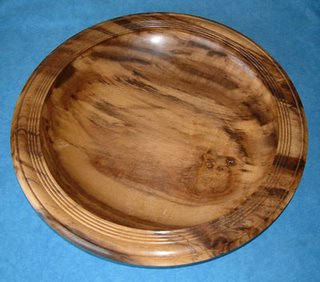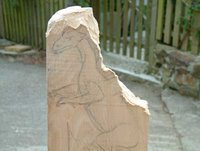 I started of with a block of Lime about 6" (150 mm) wide by 16" (400 mm) height by 4" (100mm) thick. At this stage you can see I had already drawn in the rough shape of the head and body on the side of the block with a pencil.
I started of with a block of Lime about 6" (150 mm) wide by 16" (400 mm) height by 4" (100mm) thick. At this stage you can see I had already drawn in the rough shape of the head and body on the side of the block with a pencil. 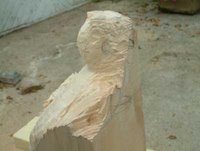
I then carved out the rough shape for the top of the head and back of the body. I wanted to make sure I had got the proportions correct before carving any fine details.
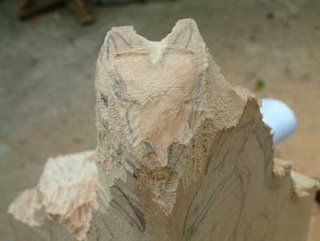
As I carved the head down I kept redrawing the dragon, adding more detail to try and ensure that the eyes would end up in the right place.

I found it quite frightening at this stage and I did begin to wonder if it was ever going to look like the dragon I had envisaged. I was starting to see the head emerging though and that gave me the encouragement to continue.
